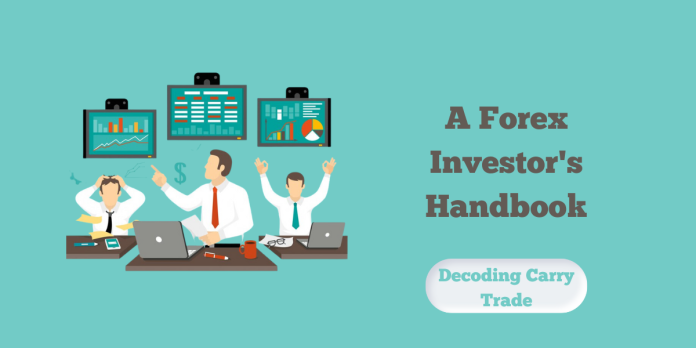In the complex realm of forex trading, astute investors frequently explore strategies designed to generate returns beyond the limits of conventional investments. Among these approaches is the carry trade, a method that leverages interest rate differentials between currencies. While it has the potential for profitability, the carry trade is not without its inherent risks, as vividly demonstrated by the notorious carry trade crash.
The Carry Trade
At its core, the carry trade involves borrowing money in a currency with a low interest rate and using the funds to invest in a currency with a higher interest rate. The goal is to profit from the interest rate differential, known as the “carry.” Investors pocket the interest rate spread as long as currency values remain relatively stable.
Example: The Yen Carry Trade
Let’s consider the classic example of the yen carry trade. In the mid-2000s, the Bank of Japan implemented a zero-interest-rate policy to stimulate the economy. Investors took advantage of this by borrowing in Japanese yen (which had low-interest rates) and investing in higher-yielding currencies, such as the Australian dollar or the New Zealand dollar.
Know: Flat Vs Reducing Interest Rates
Suppose an investor borrows 100 million yen at an interest rate of 0.5% and converts it to Australian dollars at an exchange rate of 1 AUD = 80 JPY. They then invest the Australian dollars in a government bond with an interest rate of 4%. At the end of the year, the investor earns interest on the Australian bond, let’s say 0.05 million AUD (1.25 million AUD * 4%). When converted back to yen along with interest at the new exchange rate of 1 AUD = 90 JPY, the investor receives 117 million yen. Deducting the initial borrowed amount, the net profit is 17 million yen.
The Carry Trade Crash
While carry trades can be profitable under stable market conditions, they are highly vulnerable to shifts in investor sentiment and market dynamics. The carry trade crash of 2008 is a stark illustration of the risks involved. As the global financial crisis unfolded, investors rushed to unwind their carry trades, leading to massive volatility and sharp currency movements.
Read: Financial Bubbles in the World
Example: The 2008 Carry Trade Crash
In the midst of the financial turmoil, many investors faced liquidity shortages and margin calls. To illustrate, consider an investor who had borrowed in Japanese yen to invest in higher-yielding currencies. As market conditions worsened, the risk aversion prompted a flight to safety.
Investors, facing mounting losses in riskier assets, sought refuge in safe-haven currencies like the Japanese yen. This surge in demand for the yen led to a rapid appreciation of the currency. For the carry trade investors, this meant not only paper losses on their investments but also a significant increase in the value of the yen they owed.
The Domino Effect: Global Impact of Carry Trade
The carry trade crash had far-reaching consequences beyond individual investors. As the unwinding of carry trades gained momentum, it contributed to increased volatility in currency markets and exacerbated the overall financial crisis. Countries heavily reliant on exports saw their currencies appreciate rapidly, negatively impacting their economies.
Find more: Global Economic Challenge
Mitigating Risks and the Carry Trade Landscape
The carry trade, while enticing, demands a cautious approach. To navigate the potential risks, investors often employ risk management strategies, including setting stop-loss orders, diversifying portfolios, and closely monitoring market conditions. Recognizing the interconnectedness of global financial markets, central banks also play a role in stabilizing currencies during times of extreme volatility.
Conclusion
The carry trade is a double-edged sword, offering opportunities for profit but carrying significant risks, as demonstrated by the events of 2008. Investors must approach the carry trade with a thorough understanding of market dynamics, implement risk mitigation strategies, and remain vigilant in the face of changing economic conditions.


